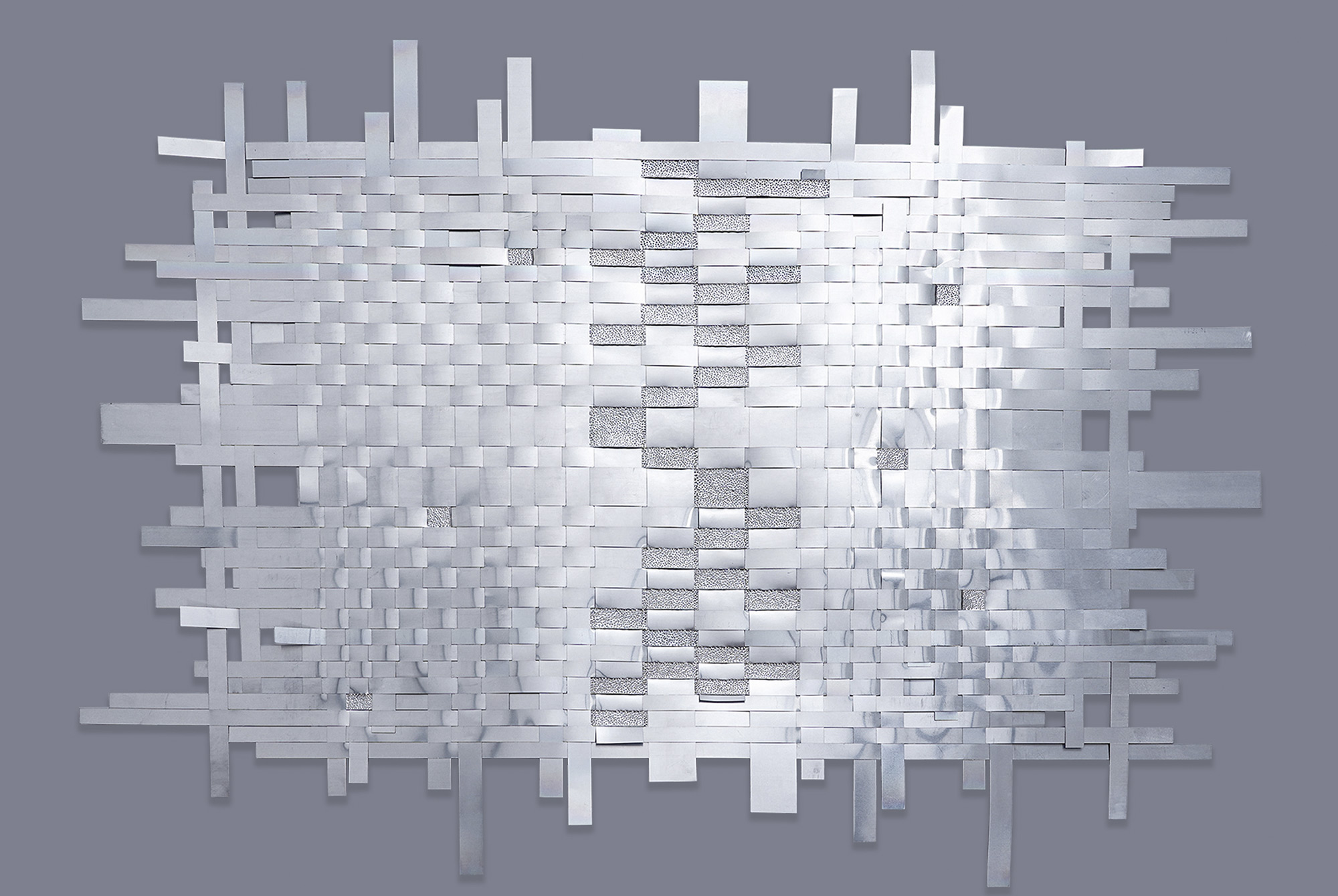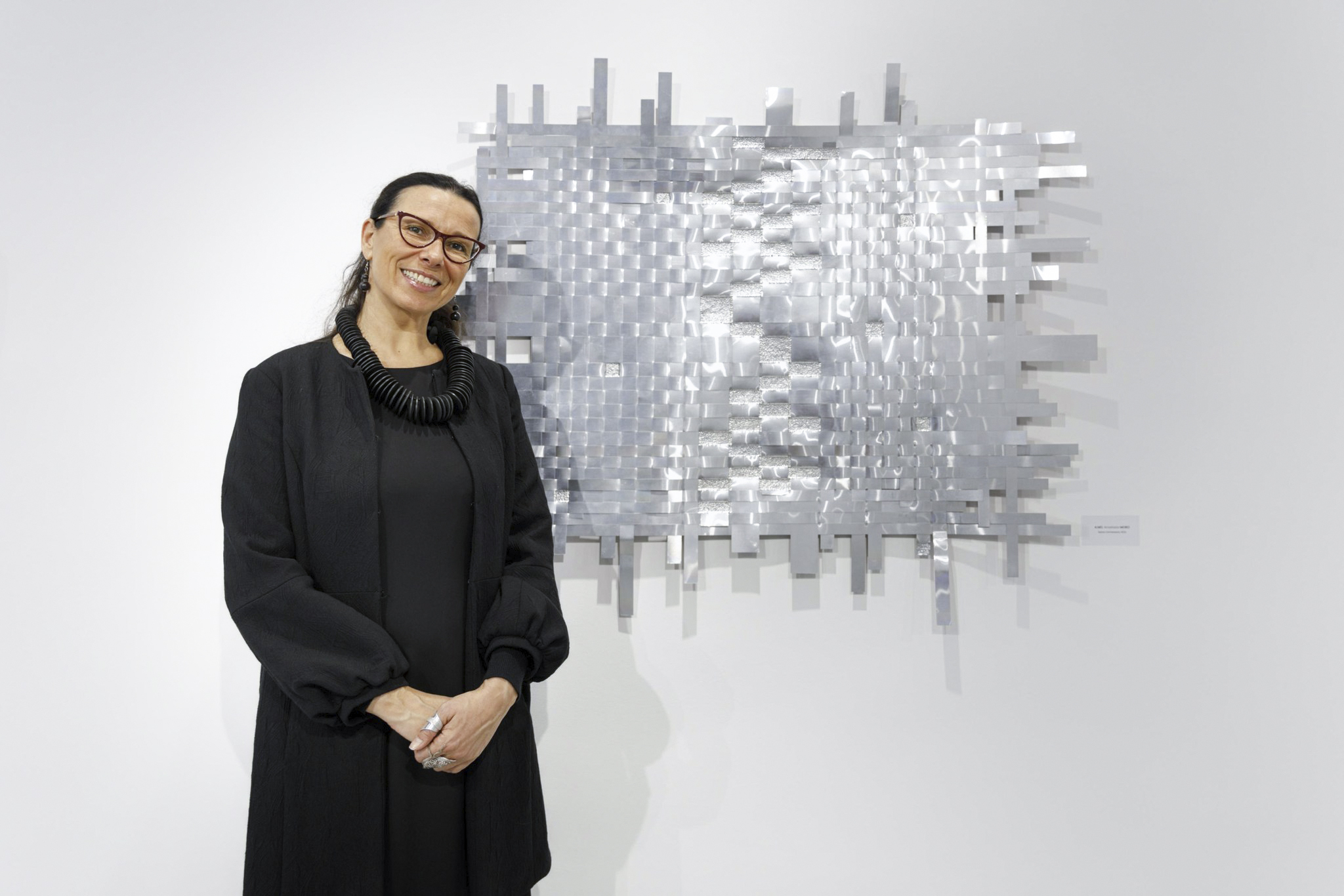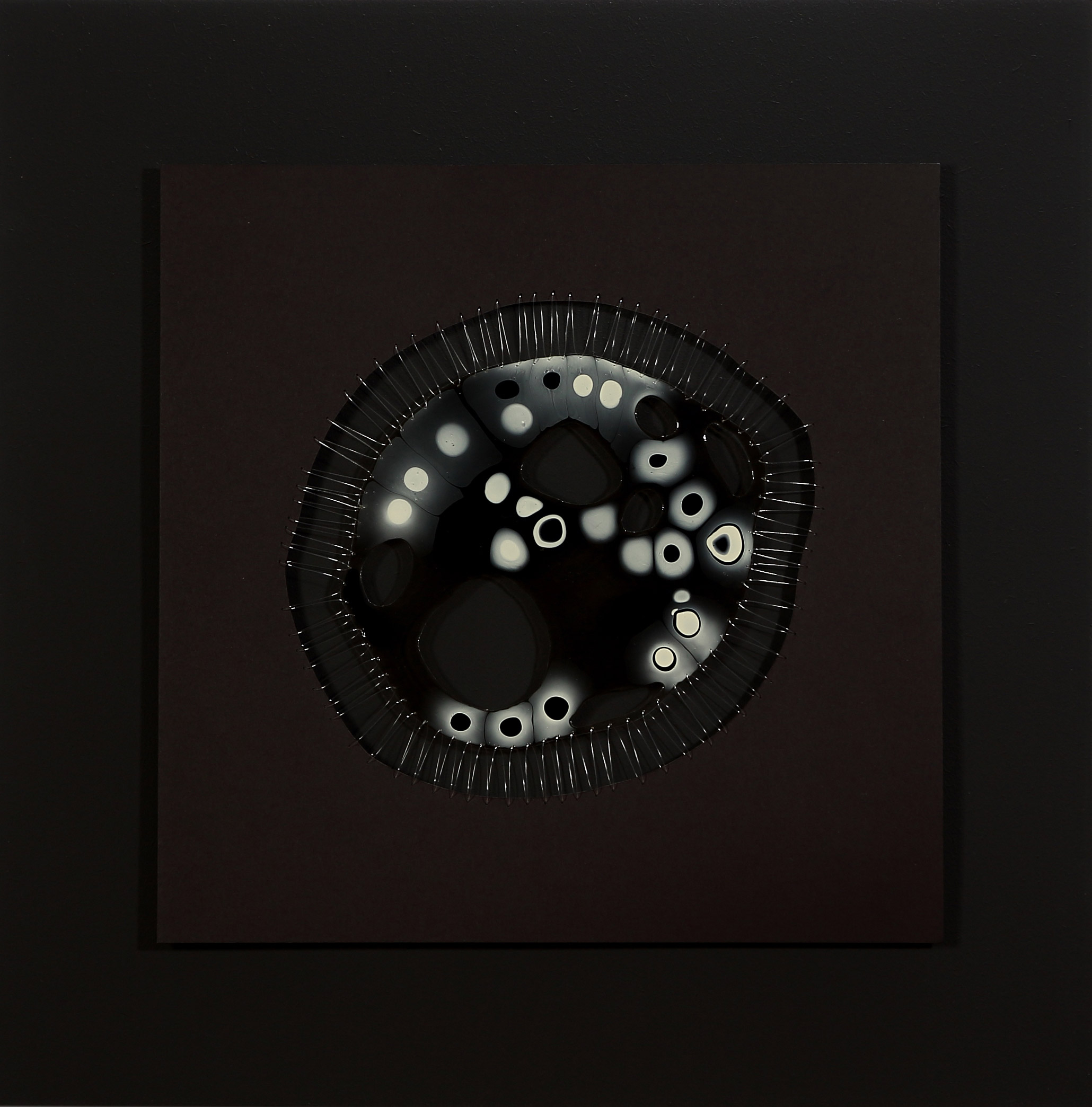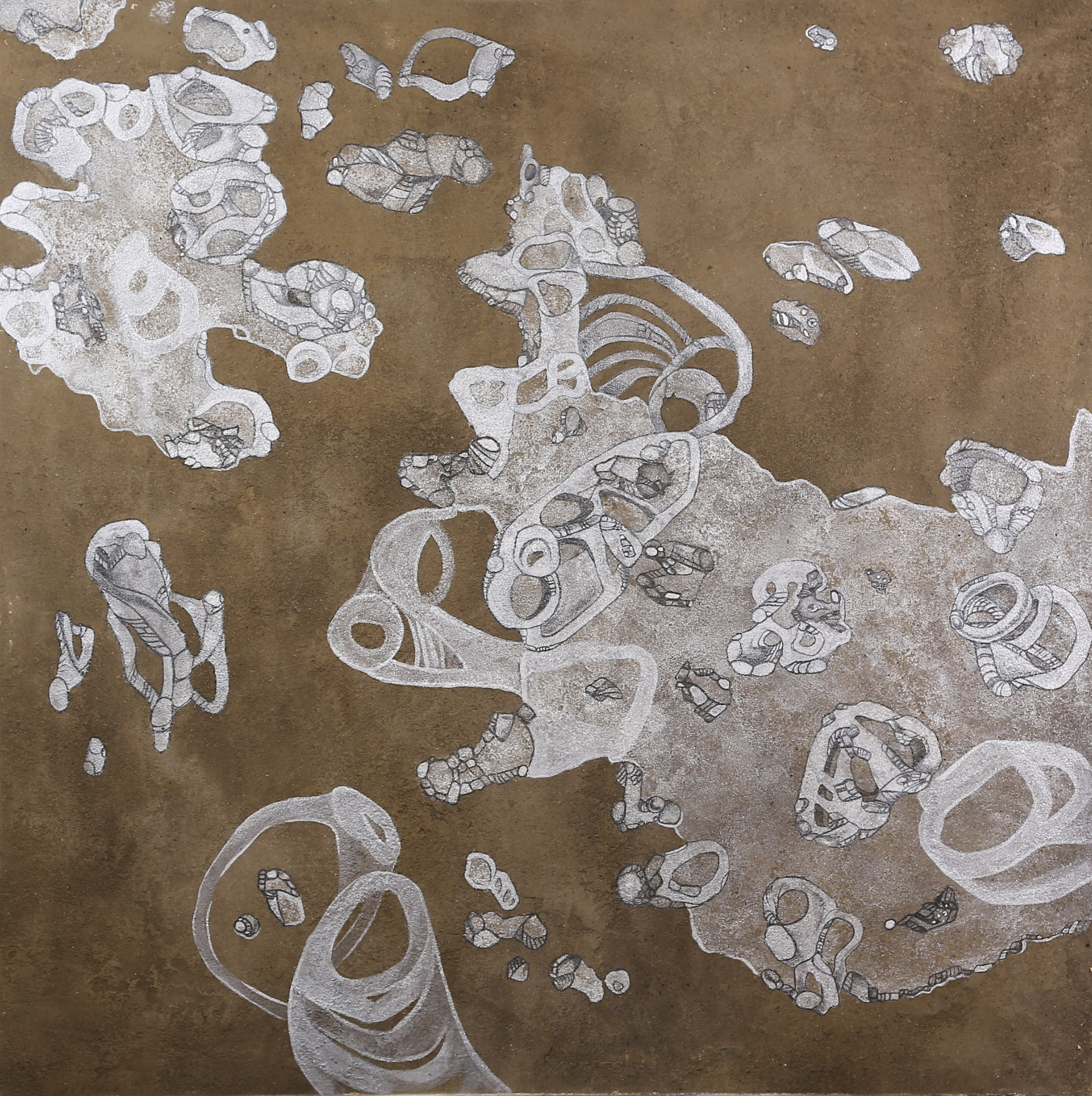THE 2023 COMEL AWARD FINALISTS
A.MO.
ANASTASIA MORO
ITALY, Borgo Veneto (PD)
www.moroanastasia.com
www.moroanastasia.com
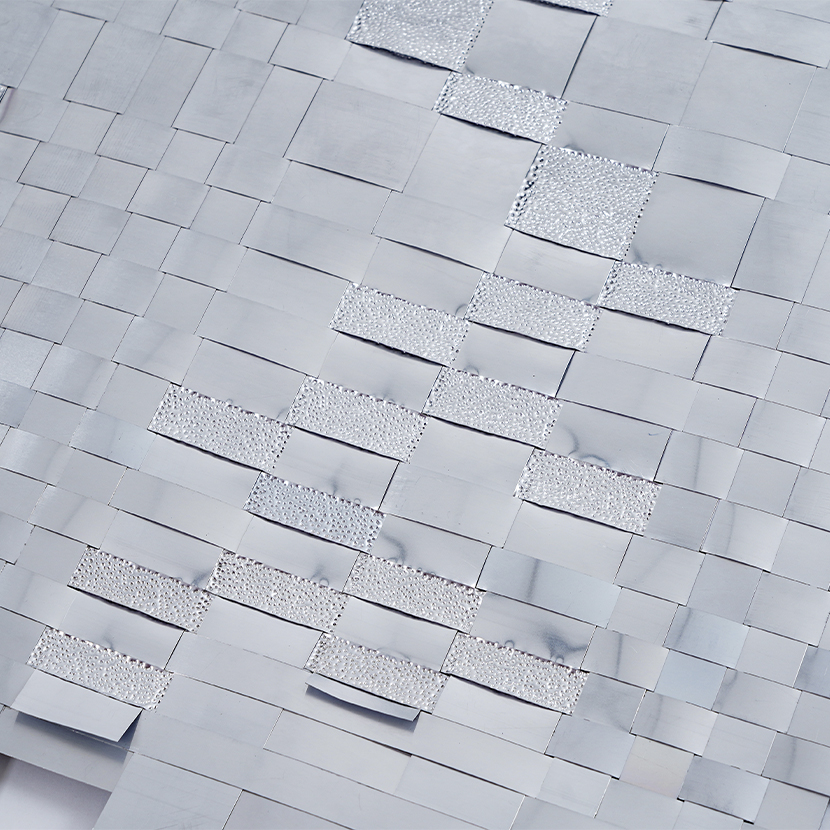

THE 2023 COMEL AWARD FINALISTS
A.MO. Anastasia Moro
Borgo Veneto (PD). ITALY
www.moroanastasia.com
www.moroanastasia.com
BIOGRAPHICAL NOTES
Anastasia Moro lives and works as a teacher in Borgo Veneto (PD). She graduated from the Academy of Fine Arts in Venice and completed a Master’s program in Partnership and Shamanism at the University of Udine. She delves into ancient artistic techniques and has exhibited in numerous solo and group exhibitions in Italy, Spain, France, and Germany. She also participates in international artistic projects. She addresses social, environmental, and existential themes, and her use of materials is carefully considered, with a preparatory study involving experimentation and research. She moves fluidly between painting, installation, photography, and video in her artistic pursuits.
ARTWORK IN CONTEST
SACRE CONNESSIONI, 2023
SCULPTURE - Aluminium plates for letterpress printing, shaped and overlapped through weaving
126 x 105 cm
AMO Anastasia Moro’s work is suggestive, arising from fine conjunction of typographic plates that weave together like a weaving, implying not only a happy visual effect, with multiple and iridescent luminous repercussions, but also a mental and spiritual process, alluding to the use of the plate, to the signs that have been engraved on it - letters, numbers and ultimately thoughts and stories - and that now, in the weave of the form, seem to ideally cross each other in a new story and a new look.
by Dafne Crocella
My research focuses on the 'archaic human-nature relationship through the endless possible worlds that nature offers: organic and natural forms, leaves, roots, bodies, and biomorphic forms that are transformed, interwoven, and borrowed through the creative process into spiritual symbolic substances. I investigate the form of life through painting, sculpture, drawings, photography and video.
Your work Sacre Connessioni (Sacred Connections) was chosen among the 13 finalists of the 10th edition of the Comel Award. An edition dedicated to the theme of experience. How do you feel this work relates to the theme of experience? What does this entanglement symbolize for you?
Experience: beautiful word! Experience implies experiencing to know, which I constantly do in my work. Getting to know the material opens up worlds and concepts I want to discuss. Thanks to the Comel Award, I experienced aluminium, which has now become part of a new cycle of artistic research. Sacre Connessioni is a work made by recycling two sheets of typographic printing aluminium, manually cutting and weaving them together. The entanglement precisely represents the intersection of relationships, Knowledge, and experience.
An interest in the synergy between human beings and their stories stands out from your work. All were created on typographic plates. What is the choice of this medium related to?
As matrixes, these plates used to print books and magazines, embed in themselves words, letters, drawings, and Knowledge in all its forms, and once their function is fulfilled, they are cleaned up to then be matrixes for other books or pages. It is nice to think that these matrices are composed of interwoven wisdom, but at the same time, they generate (as the very name matrix suggests) wisdom. The weave that makes up the work represents the strength of the spiritual dimension, both of the material, shiny, reflective and therefore referred to as the Sacred, and of the Knowledge, reflective, curious, created only by the warp of relationships. The aluminium bands loosen at the edges, creating forms with the surrounding space, almost attempting dematerialization. In this case, the aluminium sheets become a metaphor for the memory of Knowledge imprinted in the material itself. The interspaced central engraving is a tribute to the great artisans of the Sacred in the various civilizations up to the present day, wise hands, and keepers of alchemical secrets.
Sacre relazioni, 2023 - Printing on photographic paper, mirror paper
From this interweaving, your new project was born: Sacre Relazioni (sacred relationships). Can you tell us about it?
Sacre Relazioni is a photographic project born in 2023 with the idea of giving life to a work that emphasizes how sacred and important there is in relationships, whether sentimental, intellectual, parental, artistic, and above all with oneself, through the fusion of two portraits, first photographed during a shoot and, later printed, cut out and woven together manually, identifying a warp that opens to the weft weaving a new face. The portrayed subjects unite into a single work, becoming a new living organism. It is a performative and ongoing project in which the relationship between the artist and the people who are photographed and shaped, becoming actors in the work, becomes important. The result is an overlapping of intertwined faces, which again dematerialize and reconstruct itself into new forms and solutions. Thin mirroring strips are then also inserted into the various weaves, reminding of the relationship with the viewer who will be looking at the work.
The Sacre Relazioni project is the first one in which you are using an interactive art form. What kind of responses are you getting? Is art better able to reach people when they are called upon to interact in the creative process?
The idea of this project had been floating around in my mind for some time, and the right time to put it into practice came during one of my solo exhibitions. I was wondering whether the relationships among people had really changed for the better after the covid. I looked for the answer right in people by having them answer this question, "Which of your relationships do you consider Sacred?" At first, many puzzled faces looked at me confused, but then they came forward spontaneously and somewhat intimidatingly. Friends were the first to indulge, and then subsequently the audience at my exhibitions through a signed release. It is a kind of relational map, a project that is being continued in conjunction with other work I am doing. I have had and still have a good response from people who entrust me and my camera with something essential for me to to take care of. Art in this participative form enters more easily and directly into relationships, into life, touching emotions, making people think, and reaching inside ourselves.
Sacre connessioni and Sacre relazioni (Sacred Connections and Sacred Relationships). The theme of the Sacred returns in your work. What is the Sacred for you?
Sacred is understood as an act of care, protection, preservation regarding the relationship that becomes almost ritualistic. First of all, the sacred lies in the recognition by the photographed subjects of something to turn their gaze to in a new light, something they already had but now more powerful, something that lies in an untouchable dimension. Second but not least important, I feel like the one who receives a gift from these people, handing over their relationships to me, trusting the new shape I will give. The sense of the sacred can also be found in the referral of glances with the viewer who is mirrored in the final work through mirror strips
Black Souls, 2019 - resin, paper, nylon thread
Your educational background began in the figurative and then moved towards the informal. An informal that, however, does not abandon the image that continues to appear as a primordial form, almost a kind of cell, or embryo, or larva... a kind of form of life in potential. Can you tell us about your relationship with form and its evolution?
My research focuses on the 'archaic human-nature relationship through the endless possible worlds that nature offers: organic and natural forms, leaves, roots, bodies, and biomorphic forms that are transformed, interwoven, and borrowed through the creative process into spiritual symbolic substances. I investigate the form of life through painting, sculpture, drawings, photography and video. I strongly feel the need to address social, environmental and existence-related issues, but also the need to relate to nature from which we are all always too distant.
Projects related to the cell form are partly contained in artist's books. Why did you feel the need to tie yourself to the image of the book to collect them? What value does this object have in your work?
The artist's book allows me to collect these proteiform presences, suggesting a detailed study of the same form as a scientific cataloging of the manifold in its ancestral forms. In these works the small, the light, the static and changing sensuality of the resins, in the different declinations of forms and colors, are perceptions of existence that involve our very presence. Moreover, the very form of the book gives me the feeling of security. I love to surround myself with books. It's as if all the solutions to our questions can be found in there.
You use various materials in a materic search, leading to a large production. How do you choose the materials you use? And what value do they have from a conceptual point of view within your work?
I do not leave the use of material to chance; instead, I devote a careful initial and preparatory study made up of experimentation and research. For me, the choice of material is a free-meditated necessity linked to the 'expression and language of the work: often, the material tells and has its own poetry, its own flavor. I have experimented a lot with resin with its subtle and elegant appearance, because it allows me to translate the idea of a physical body into something fluid and transcendent. Black resins present magmatic forms that seem to preserve ancient traces of microorganisms. The same poetics returns with varied means in the cycle of works Geo-Graphies, made with ash and graphite, mapping shadows of tree canopies on the ground detected on the canvas, primordial codes "excavated" and identified in the material. Ash rich in mineral salts represents the continuity of life between the earthly and the spiritual. Thread is also an important element in my research, it unites, has to do with the meditative feminine and adjusts, building. The mirror is another material I have spent a lot of time on and a work related to the fairy tale.
Geo-Grafie, 2017 - ash, acrylic and graphite on canvas
Among different materials, you are experimenting with aluminium. How did the work with this medium begin? And what characteristics of this metal do you find congenial for your work?
The work with aluminium began by chance. Going to a print shop I was familiar with, to see the result of one of my catalogs, I noticed aluminium plates and asked if they could give me some. I was interested in used ones because of the fact that I thought they were impregnated with memory, a bit like mirror. I like the soft feel of aluminium despite its being metal. It's as if it hides behind a shell but then, as soon as it understands the artist's intentions, it allows itself to be molded and trusts his hands, collaborating.
Do you have artists from the past that you are particularly fond of and that you feel have influenced your work?
There are some artists I deeply love who have different languages. The first one is definitely Anish Kapoor, to whom I dedicated my thesis at the Academy of Fine Arts in Venice. What fascinates me about him is his ability to tell the story of emptiness. I love Maria Lai, and her unreadable books weave stories that go to their roots. I like the work of the great master of video art, Bill Viola, for the poetics he has given to a technological medium. Marina Abramovic's research on the body and its resistance about the power of the mind won me over during my academic studies. It brings me back to a childlike dimension the magic and transformation of Niki de Saint Phalle's art...As you see all very different artists but who, in their own way, tell of a sacred dimension and create bridges connecting distant and contemporary cultures.

